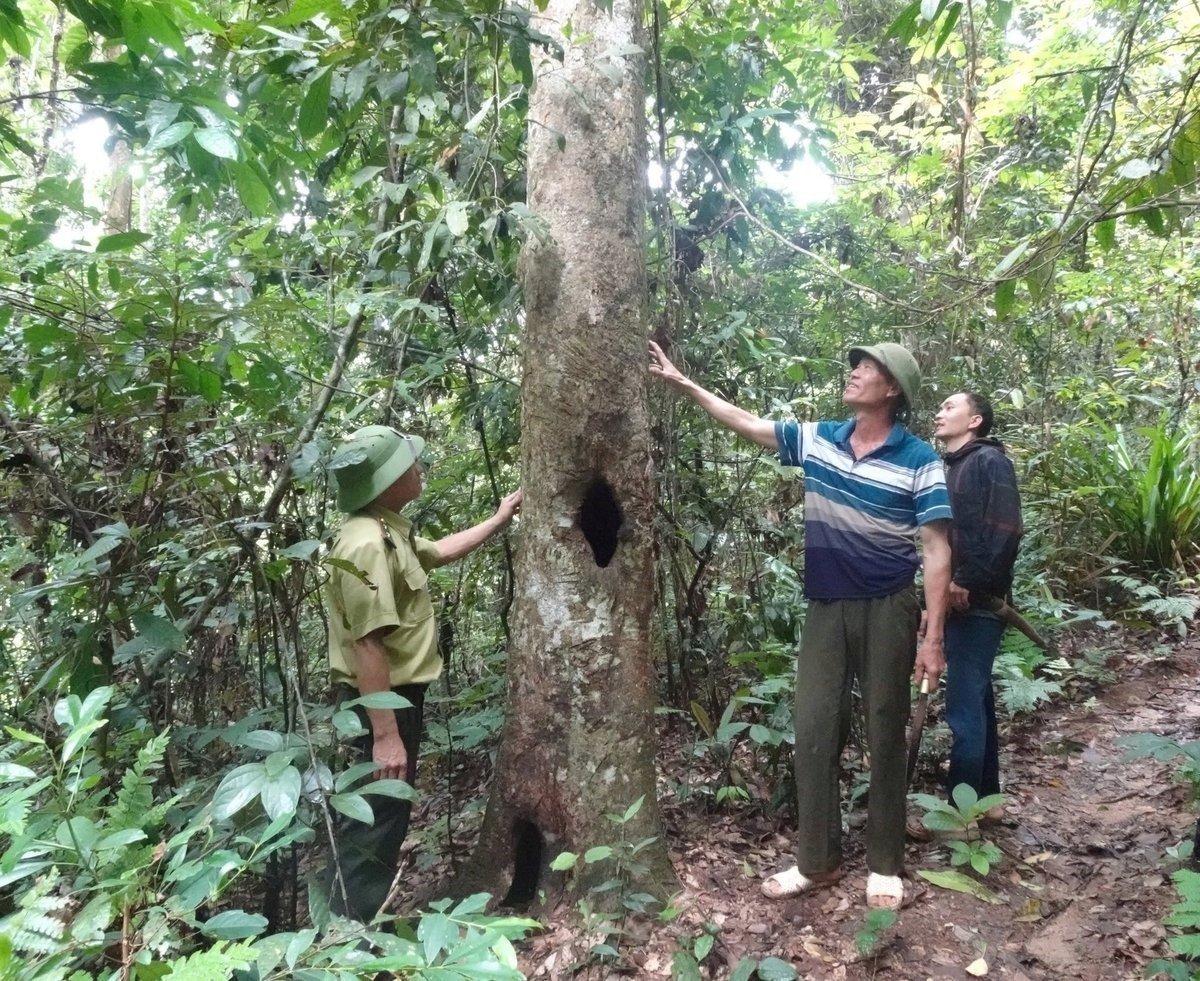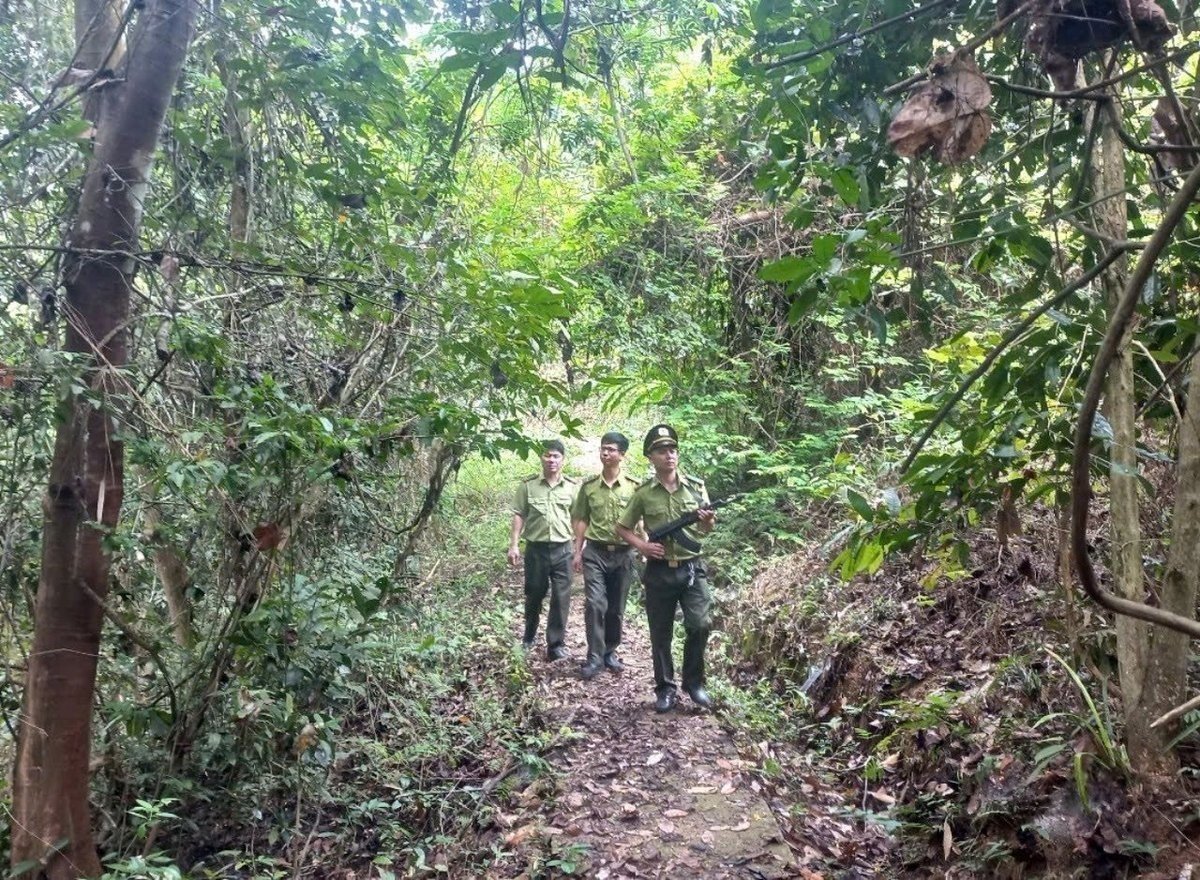November 19, 2025 | 14:58 GMT +7
November 19, 2025 | 14:58 GMT +7
Hotline: 0913.378.918
November 19, 2025 | 14:58 GMT +7
Hotline: 0913.378.918
According to the Thanh Hoa Provincial People's Committee, with a forest and forestry land area of over 647,000 hectares, Thanh Hoa is one of six provinces selected to implement the Emission Reductions Payment Agreement (ERPA), signed on October 22, 2020, between the Ministry of Agriculture and Rural Development (now the Ministry of Agriculture and Environment) and the International Bank for Reconstruction and Development (IBRD).
Under the agreement, the total value of the transfer of 10.3 million tons of CO2 emission reductions in the North Central region for the 2018–2024 period is USD 51.5 million. Thanh Hoa is expected to receive approximately USD 8.389 million, equivalent to VND 219.3 billion.
As of June 20, 2025, the total revenue from the ERPA fund in Thanh Hoa province had reached VND 199.3 billion (nearly USD 7.69 million).

ERPA payments motivate households to better care for and protect forests. Photo: Thanh Tam.
Since 2023, the Management Board of the Fund for Forest Protection and Development and Natural Disaster Prevention and Control in Thanh Hoa Province has disbursed payments in accordance with regulations to forest owners, including organizations, commune-level People's Committees, households, individuals, and residential communities.
As of now, the total disbursements have reached VND 107.68 billion (approximately USD 4.15 million), accounting for 54.1% of the planned amount. Of this, VND 49.2 billion (USD 1.9 million) has been allocated to 31 organizations; VND 1.82 billion (USD 70,220) to 36 commune-level People’s Committees; and VND 52.51 billion (nearly USD 2.03 million) to households, individuals, and residential communities. By the end of 2025, the province is expected to disburse VND 180.02 billion (over USD 6.94 million), equivalent to 90.45% of the plan.
In 2025, the Thanh Hoa Provincial People's Committee approved a financial plan utilizing ERPA revenues, with a total budget of nearly VND 118 billion (approximately USD 4.55 million). This budget includes VND 45 billion (more than USD 1.73 million) from unspent funds in 2024 and an estimated VND 73 billion (nearly USD 2.82 million) in new revenues expected in 2025.
The total area of natural forest eligible for payment in 2025 is 365,758 hectares, with a uniform disbursement rate of VND 166,711 per hectare, equivalent to approximately USD 6.43 per hectare.
In total, 25,398 forest owners in Thanh Hoa will benefit from ERPA payments in 2025, including 25,301 households, individuals, and residential communities; 59 commune-level People’s Committees; and 38 organizations.

ERPA payments create a driving force for the functional sector to better manage and protect forests. Photo: Thanh Tam.
In Thanh Hoa, ERPA has delivered practical results in reducing greenhouse gas emissions and supporting forest protection. It has encouraged forest owners to take greater responsibility and contributed to reducing violations of the Law on Forestry. For residential communities, revenues from ERPA have helped build essential infrastructure and improve the quality of life.
Translated by Thu Huyen

(VAN) Agricultural extension officers in Quang Ninh do more than transmit knowledge; they have become a steadfast support system for farmers on the path to sustainable agricultural development.

(VAN) The development of a high-quality beef cattle herd has brought major benefits to livestock farmers, creating jobs and enabling better use of agricultural by-products.

(VAN) In the eastern region of Gia Lai, crossbred cattle now account for 93%, forming a high-quality beef herd and establishing a recognized brand, the result of 35 years of persistent effort.

(VAN) Integrating agricultural extension activities with ecotourism development unlocks promising new avenues for localities boasting specific advantages in grape and apple cultivation.

(VAN) Enterprises and cooperatives accompany farmers in Tay Ninh to develop an organic seedless lime growing area, paving the way for poverty reduction.

(VAN) There were times when Pho faltered, yet his aspiration to bring the pure aroma to those who truly value clean tea kept urging him forward.

(VAN) Bich Thao Coffee Cooperative pioneered products achieving the national 5-star OCOP standard, paving the way for Son La coffee to conquer international markets.